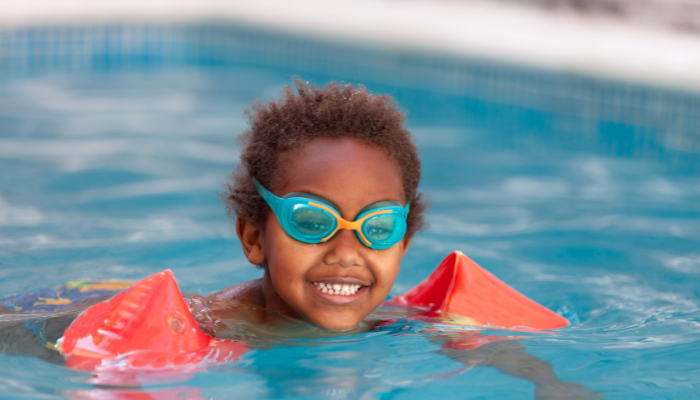Swim Safely
Four Tips for Summer Water Safety
Drowning is a leading cause of death for children ages 1-4, according to the Centers for Disease Control and Prevention. During the summer months, when water activities are more prevalent, drowning is more common, reports the National Safety Council.
Extreme heat may increase incidents of cardiac arrest and an average of 33 drownings occur in the U.S. each day, one-third of which are fatal. To protect your loved ones when playing in and around water this summer, keep these tips from the American Heart Association in mind:
Never Swim Alone. Children always need supervision, but even adults should swim with a buddy so someone can call for help if an unexpected problem arises. Swimmers can get cramps that hinder movement in the water and slips and falls can happen to anyone.
Wear Protective Devices. U.S. Coast-Guard-approved life jackets provide the best protection for someone who is in the water and unable to safely reach solid footing. When on a boat, all passengers should wear life jackets in case of an accident, and young and inexperienced swimmers should wear one any time they’re near water.
Choose Your Swimming Location Wisely. Avoid unknown bodies of water where hazards such as tree limbs or rocks may be hidden below the surface. Also avoid waterways with strong currents, such as rivers, that can easily carry even the strongest swimmers away. Instead, choose swimming pools and locations with trained lifeguards on duty.
Learn Cardiopulmonary Resuscitation (CPR). In the event of a drowning, no matter the age, the American Heart Association recommends rescue breaths along with chest compressions to keep oxygen circulating to the brain. Only 39% of those who participated in a consumer survey said they are familiar with conventional CPR and only 23% know about Hands-Only CPR.



















